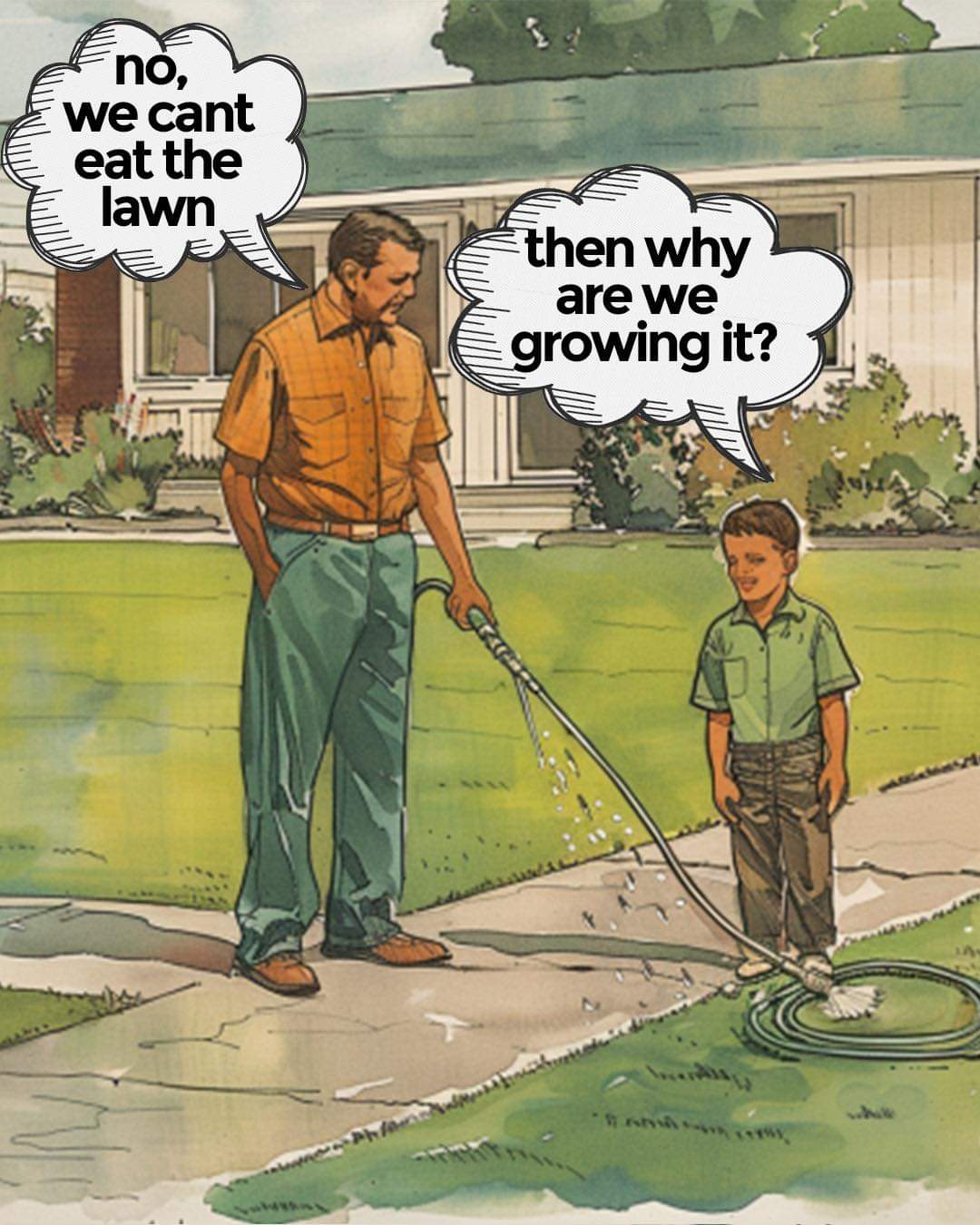this post was submitted on 10 Jul 2024
557 points (92.1% liked)
No Lawns
2053 readers
1 users here now
What is No Lawns?
A community devoted to alternatives to monoculture lawns, with an emphasis on native plants and conservation. Rain gardens, xeriscaping, strolling gardens, native plants, and much more! (from official Reddit r/NoLawns)
Have questions or don't know where to begin?
- You can check our website
- Or our Reddit wiki
- Our FAQ
- Resources by Country
- Resources by US State
- Doug Tallamy AMA
Where can you find the official No Lawns socials?
Rules
- Be Civil
- Don't dox yourself
- Stay on Topic
- Don't break instance or Lemmy rules
Related Communities
- NativePlantGardening - Mander
- NativePlantGardening - Sh.itJust.Works
- Composting - SlrPnk
- Nature and Gardening - Beehaw
- Reclamation - SlrPnk
founded 1 year ago
MODERATORS
you are viewing a single comment's thread
view the rest of the comments
view the rest of the comments

What else can you put there to keep weeds away and also have an open space to enjoy? Concrete and paving is not an acceptable answer
It depends on what you need to enjoy the space.
If you're looking for a grass alternative and aren't running around on it all the time, roman chamomile can be a good, low-growing, pet-safe plant. We used this on my neighbor's postage stamp front lawn so he wouldn't have to mow but it would still look nice and intentional. There are also a handful of other low-growing plants which require much less maintenance and are more drought-tolerant than grass, but they tend to be best for low-traffic areas, so if you're out there playing catch or capture the flag with your kids most days they're probably not as good as grass.
If you're in a shady area, moss might be an option. It also prefers low traffic.
And the option abhored by HOAs and your fussiest neighbors: just don't bother maintaining a perfect lawn. A lot of the work and environmental damage comes from keeping a perfect monocrop of a specific grass cultivar. Fertilizer to keep the soil good enough (which gets washed into local waterways and causes algae blooms) pesticides (which kill bees and a slew of other insects) and herbicides to kill any plants that try to compete with the grass (which remain in the soil as well). Traps for rodents that try to exist in the yard. Not to mention the energy and person-hours spent on trimming it frequently. Just accepting that grass isn't really meant to form a thick lawn in most areas, and will look a bit patchy, multi-hued, and feature some other plants, will greatly reduce the effort and damage caused.
Or if you can't stand the thought of doing that (or will get in trouble) consider downsizing it a little - section off the least-used sections of your lawn, plant some cool native trees or shrubs, throw down some mulch so it looks intentional.
And the last option (where applicable): no grass.
When I was a kid our house was in the woods, with no clearing to speak of, so we mostly just played on the forest floor, which was mostly leaves and pine needles. If you pick up the sticks and keep it somewhat open, it can look really beautiful.
Yeah I don't think they're talking about you